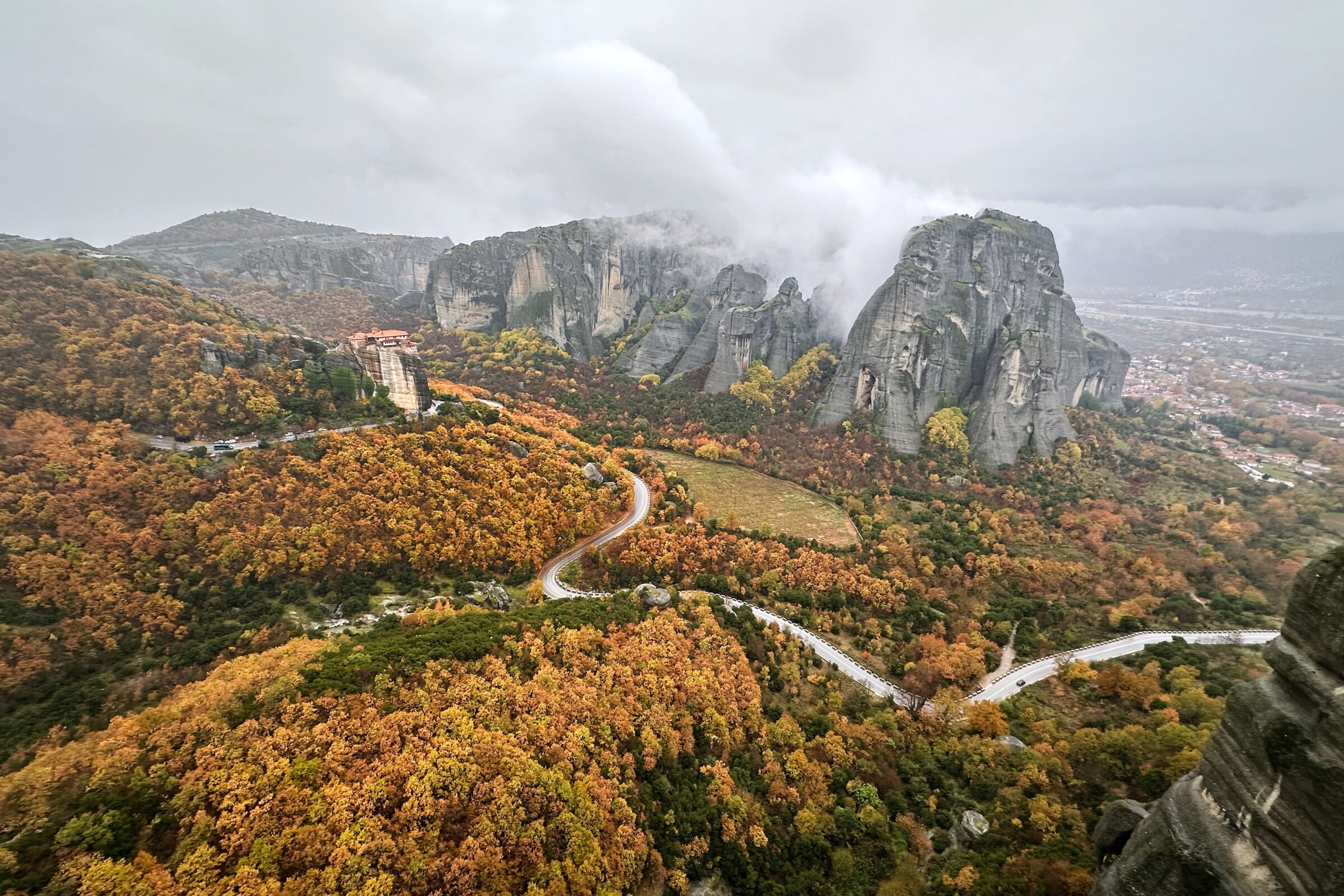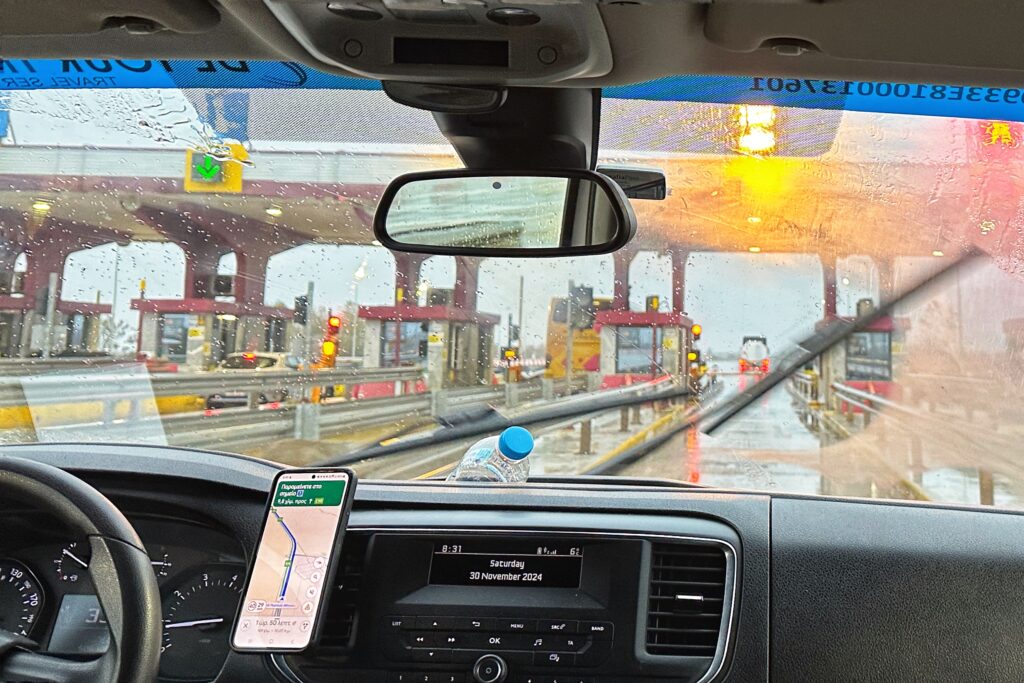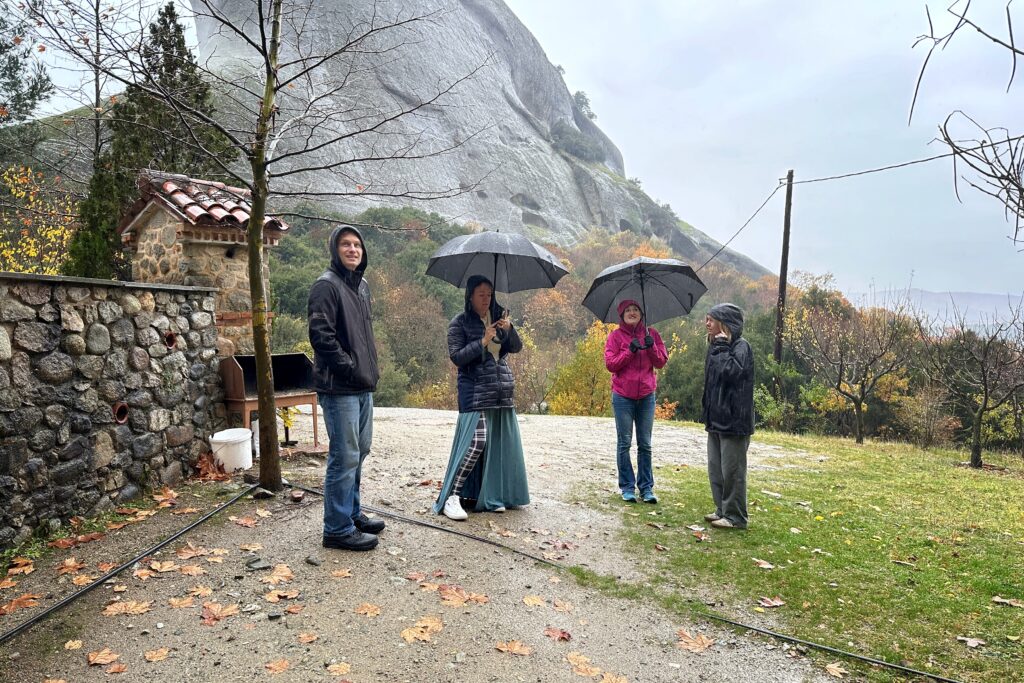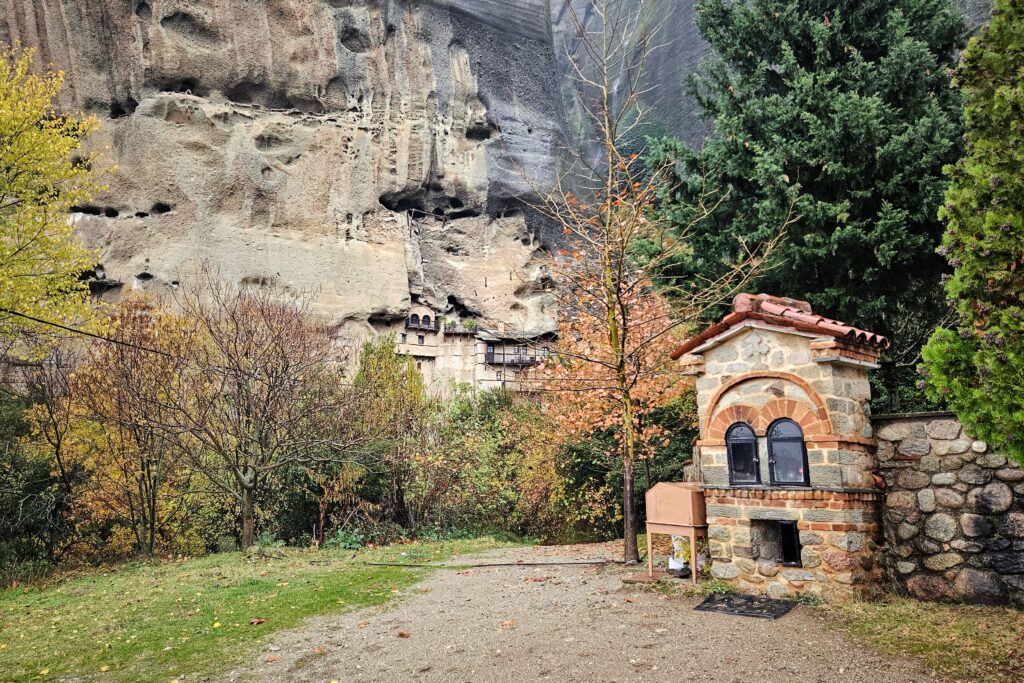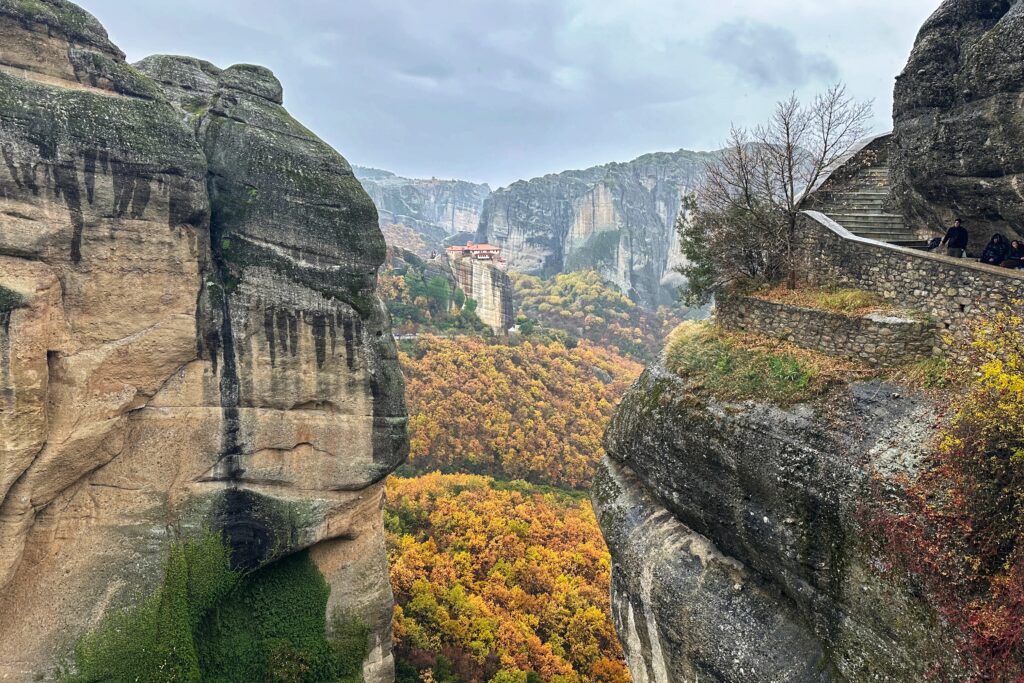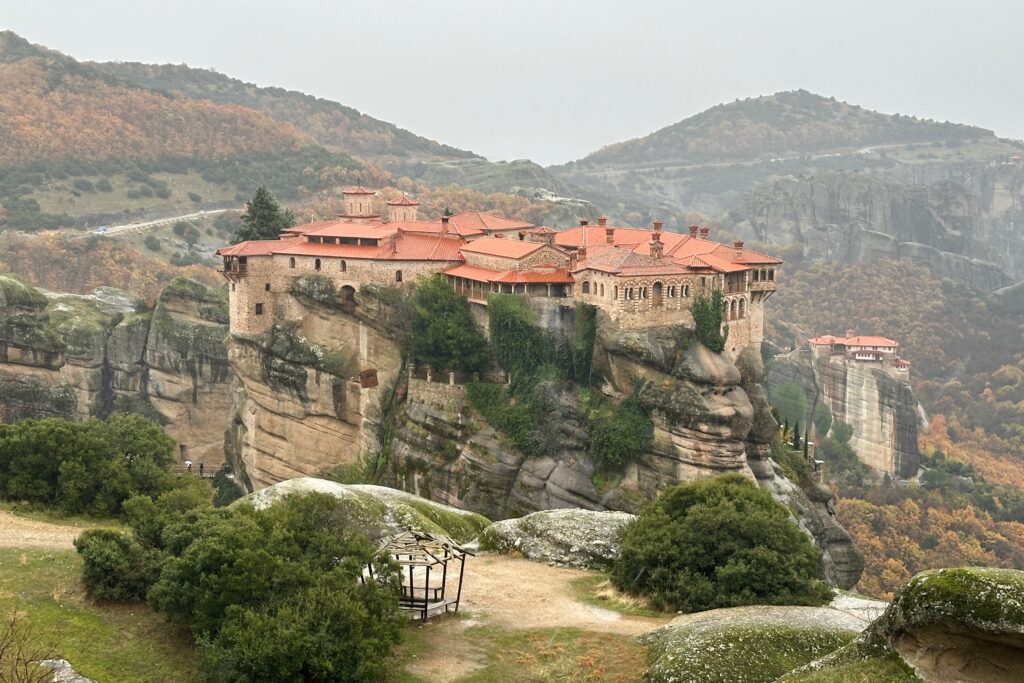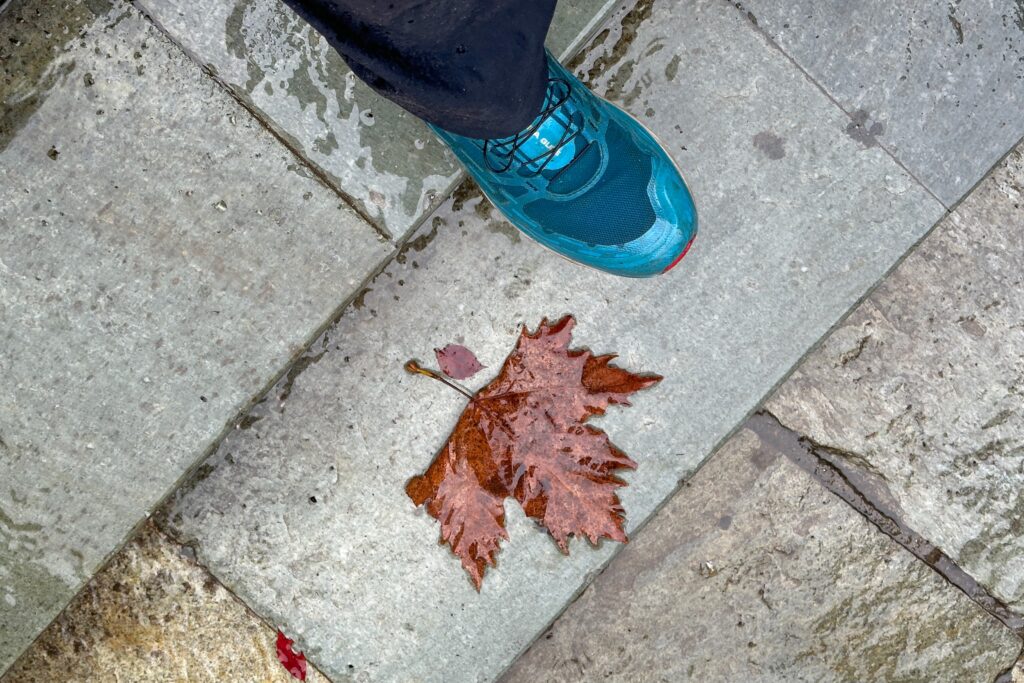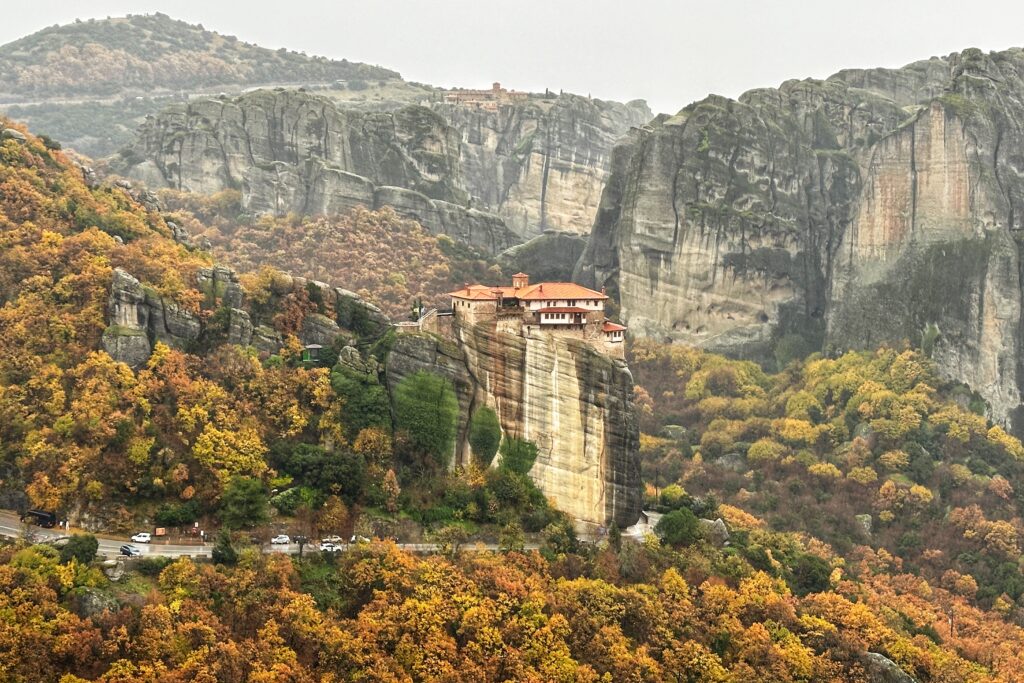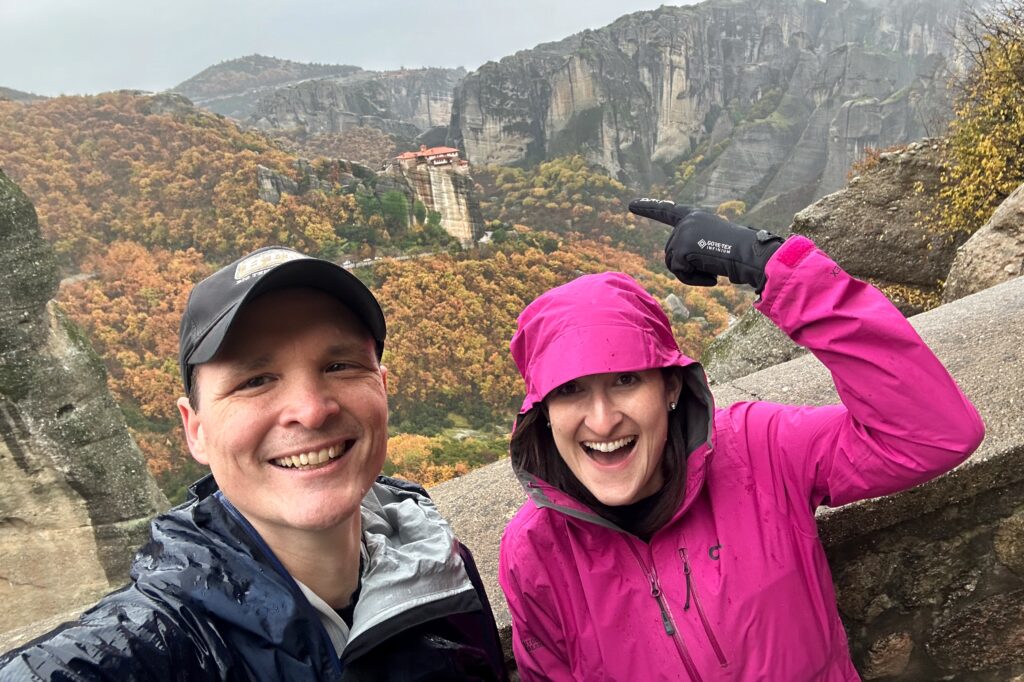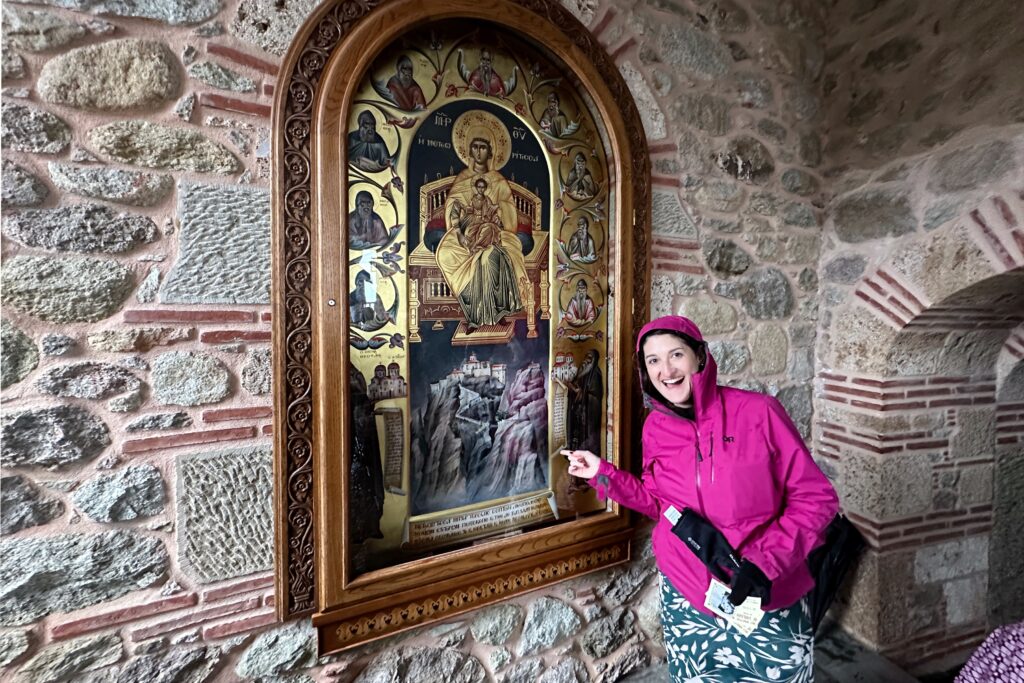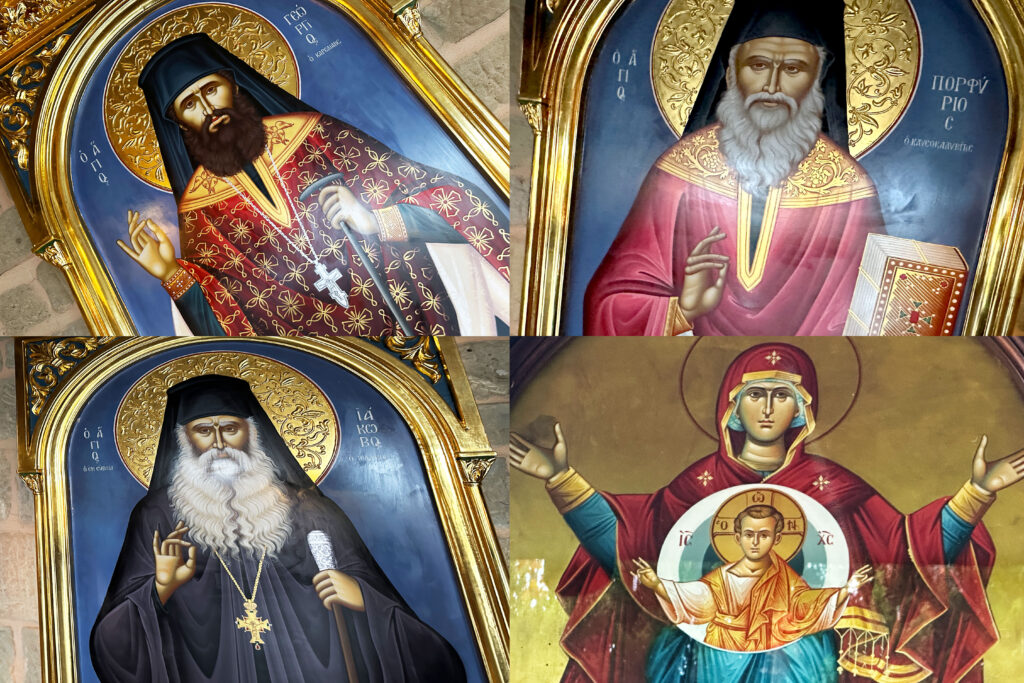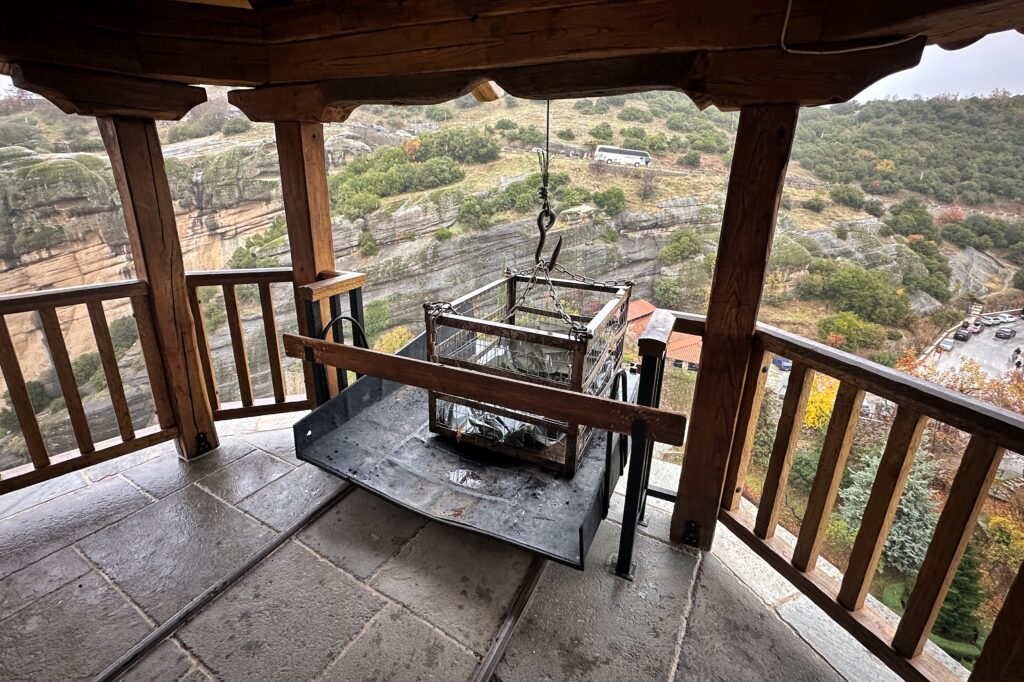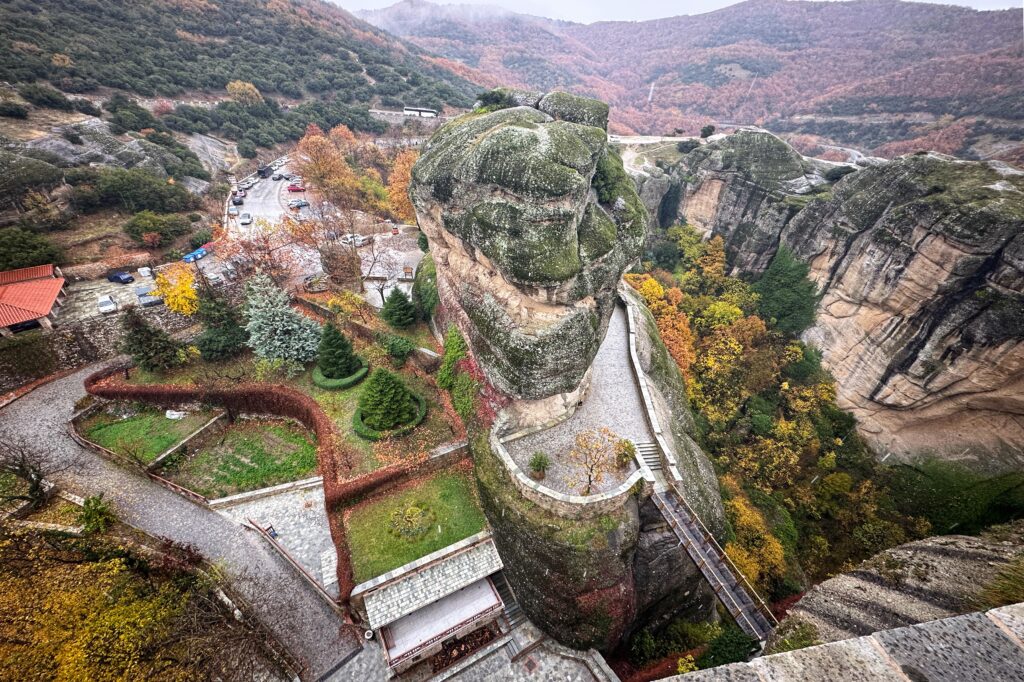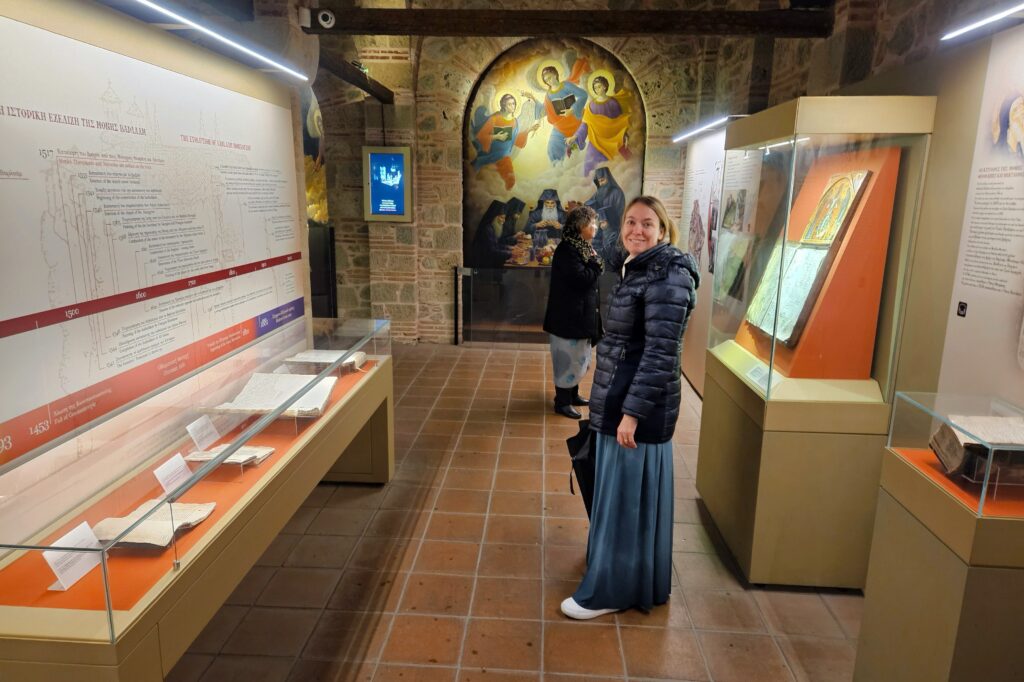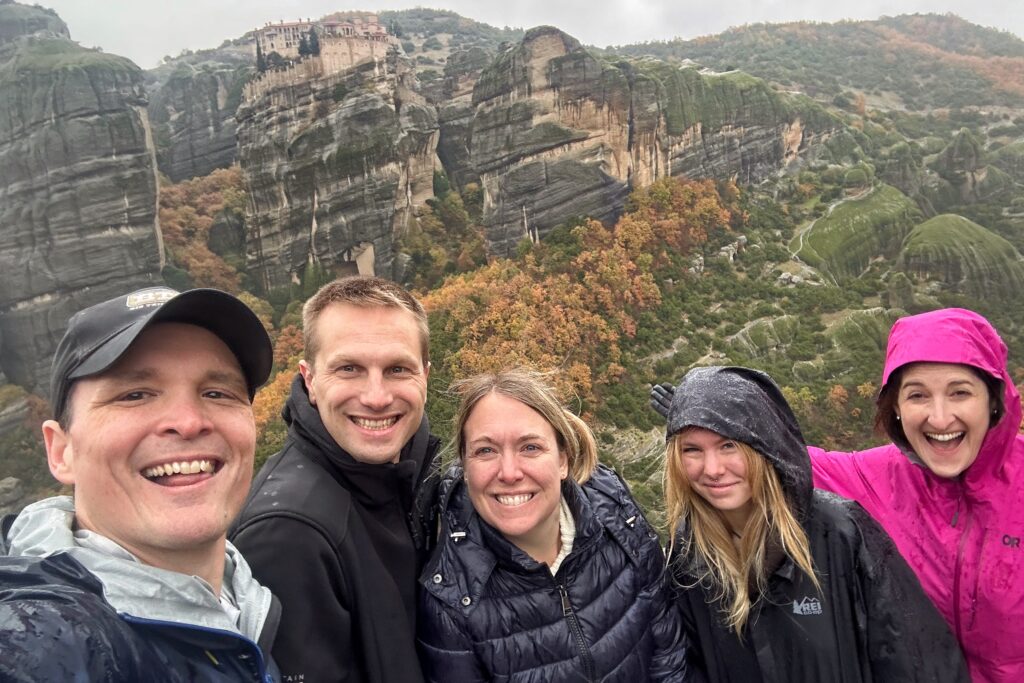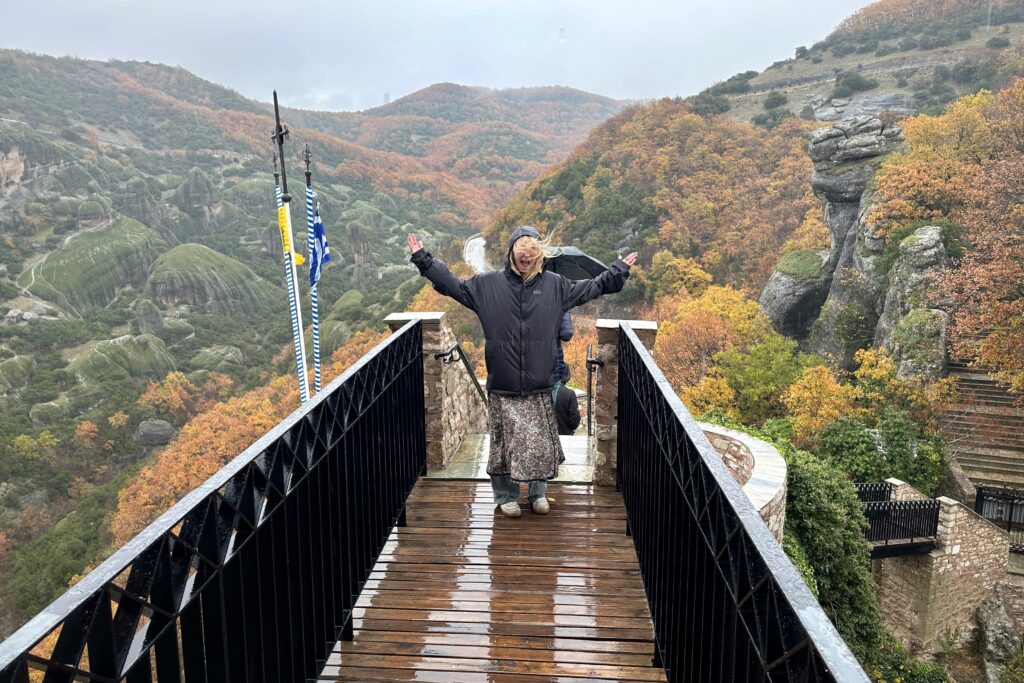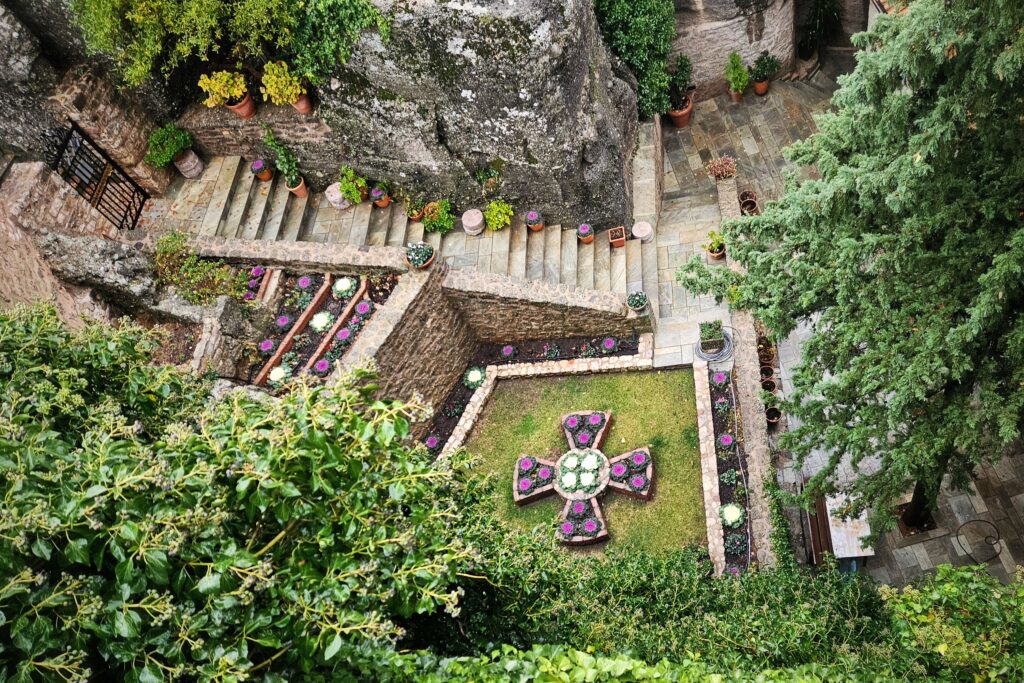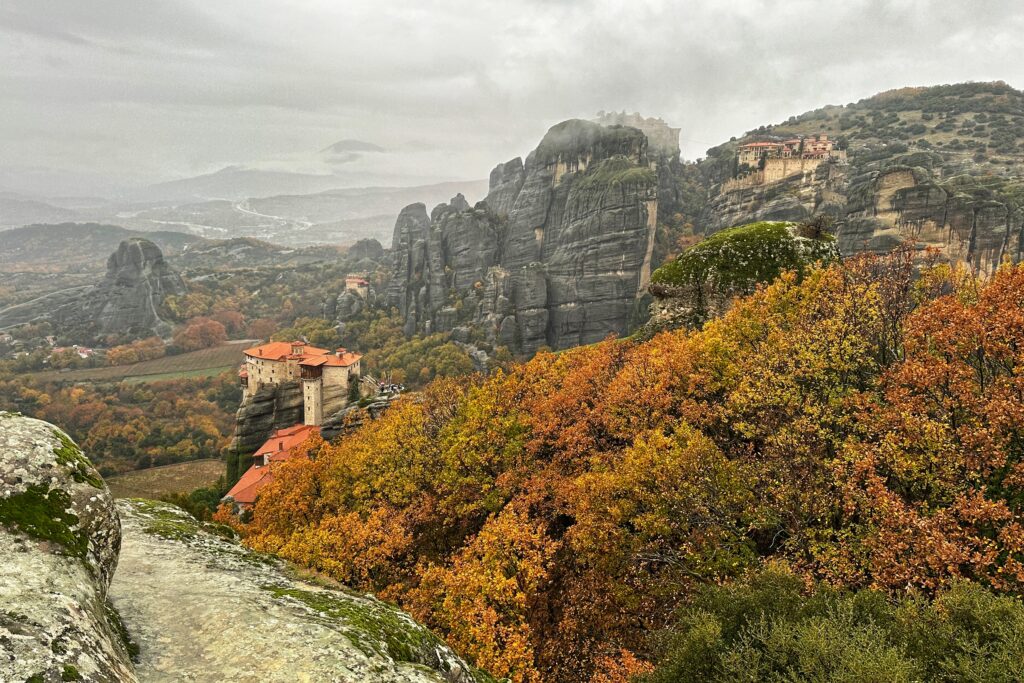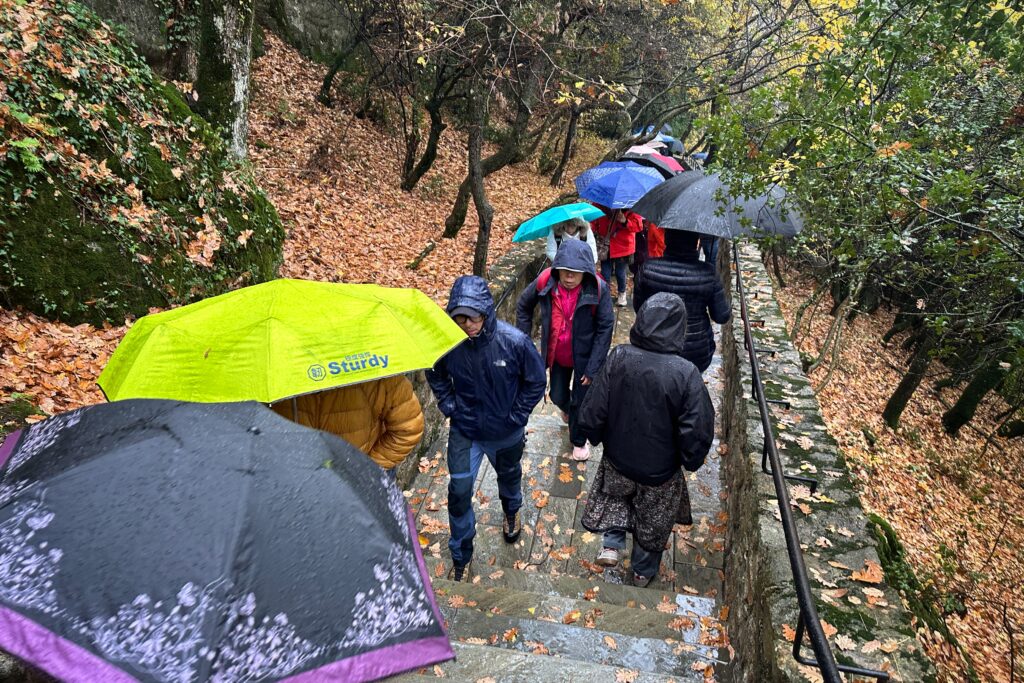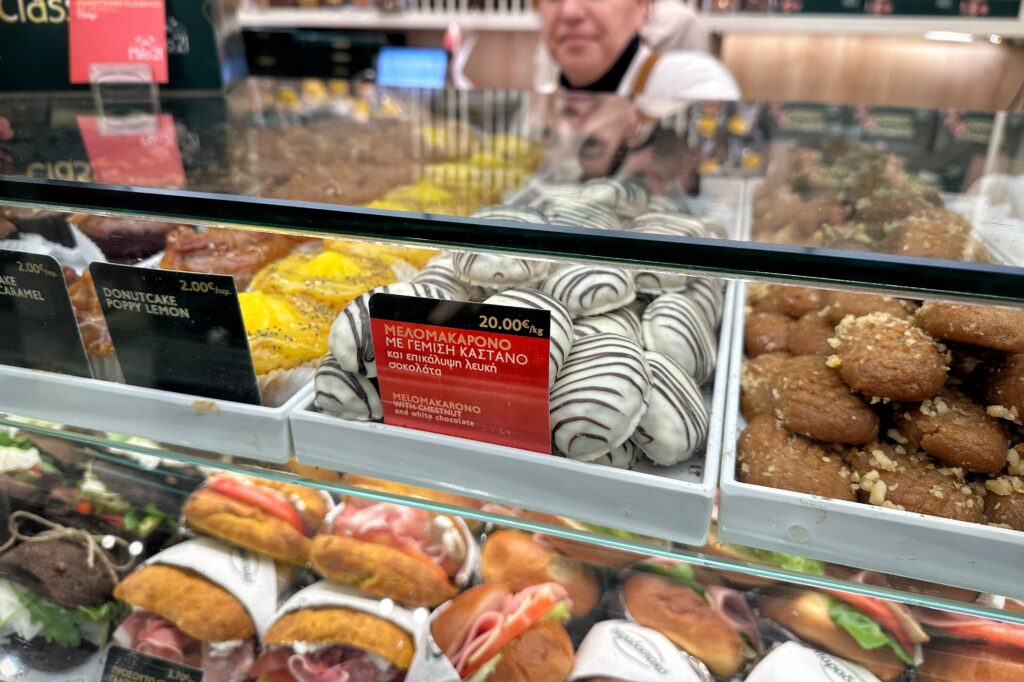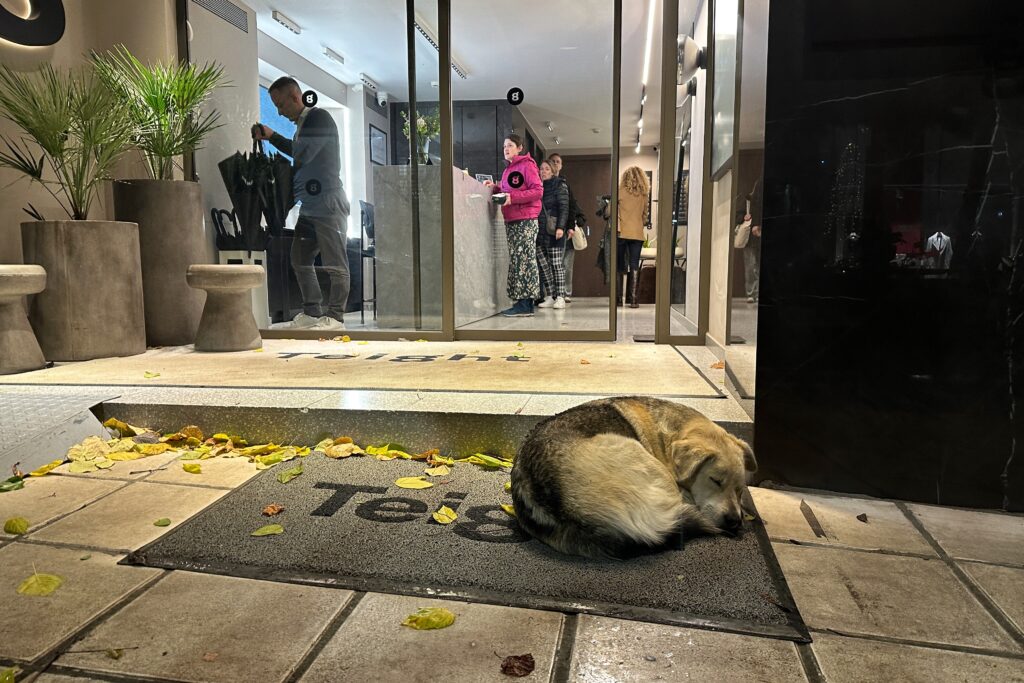Day 9: Kalabaka
We woke up early this morning to get ready for our full-day tour of the Meteora Monestaries. Originally, we were going to walk to Lily’s hotel where we would meet the driver. But the rain continued, so we decided to take the bus instead — and then the driver said he would pick us up from our hotel. Even better! We were able to relax and enjoy the rest of our hotel breakfast. Yesterday we learned that espressos are included, so with that level unlocked we had our morning cappuccino. At 8am, we met Yanis who was our driver for the day. We went to pick up Lily and were on our way. The monasteries are located in Kalabaka in central Greece, which is about a three-hour drive from Thessaloniki.
Yanis is technically a driver, but acted as our tour guide as well. He told us about the city walls that still have segments standing from centuries ago and the metro line that was supposedly opening today after 30-some years in the works. He also mentioned that the industrial area with multiple factories is called the “Mordor of Greece.” We are going to get along great with Yanis!
As we got close to Kalabaka, Yanis stopped at a cafe for a quick break. Matt and Jo were eyeing the sandwiches in the fridge and Yanis suggested to have the owner make one of the sandwiches in the “special” format. He added tomatoes, pickles, mayo, and an egg and toasted it. Add two cappuccinos and boom — perfect elevensies.
The name Meteora means suspended between the earth and sky. Thousands of years ago, the area was huge lake with tall sedimentary towers. The tectonic plates pulled apart and lake dried up, leaving the towers.
From the cafe, it was a few minutes to the first stop, the lower caves. When hermits arrived in the 1200s, the found caves to live in. They then moved to upper caves, higher up the towers. In the 1400s, they started building the Monastaries on top of the towers, because the higher you are, the closer to god, obviously.
After viewing the ground level cave, we went to see the upper caves and one of the monestaries built into the wall.
In the mid 1400s monks built 25 monasteries on the towers. Each of the large ones took about 200 years to complete. There are only six remaining, but they are still functional and “active.” The first monetary we saw has one person living in it. Another has two.
In theory, a new monk can come live here. There are a total of 17-18 monks in the six monasteries and about 45 nuns. As long as anyone lives there, they stay open.
The first monastery we went into was Varlaam, which is one of the two largest. We were able to explore for about an hour. The art, architecture, and views were incredible.
One interesting part of the monk life was using the pulley system to get materials. Since the Monastaries were purposely hard to access, it meant they also had to get creative to get food and supplies. They build a “net” to lower to the ground below and would pull it up with new materials, and sometimes, new monks.
We then went to a much smaller monastery that is currently a nunnery. We were lucky to be running about 30 minutes ahead of a couple tour busses full of people who were entering when we were on the way out. Yanis then drove us to a few additional lookouts where we could see the other monasteries and the ruins of some others. We stopped at an overlook for pictures and then drove down back into Kalabaka for lunch.
At our lunch spot, Yanis explained the menu and warned us that they serve large portions. He recommended we order a few main dishes and share. And that’s exactly what we did. One order of pork chops, black pig steaks, mousaka, lamb baked in a pot, and baked feta later we were fed and happy. Everything was amazing. We were full, and ready to go, but then they brought out dessert, which seemed to be a honey walnut cake and ice cream with chocolate sauce. Again, delicious.
Since we finished lunch (call it supper) at 4pm, we agreed that we did not need a sit down dinner later today. Yanis suggested some local, seasonal pastries to try later. We drove the three hours back to Thessaloniki. On the way, a herd of black pigs crossed the road in front of us. It was still raining when we got back. We all went to Lily’s hotel so she can give Cordwood and Belinda some clothes to take home. We then ventured out and took the bus to Aristotle Square in search of the chestnut pastries Yanis mentioned.
There is a pastry store right on the corner that we’ve passed multiple times. We tried there first and found a Christmas chestnut pastry covered in white chocolate. At the time, we were not 100% sure it was exactly what Yannis was talking about, but it was delicious. After some googling, we think we found the right treat. We also got a giant chocolate brownie because, why not?
The rain wasn’t too heavy, but there were high winds so even the awnings outside of the stores were not coverage enough for us as we walked back to the hotel to eat our treats. We played a round of Stone Soup, a cooperate game Cordwood got for free from the Chick-fil-a kids meal. We won, but it was close. Phew!
Today was our last day, so we went back to our room to pack and get ready to go. We leave early tomorrow for the airport. Hopefully the rain stops by then. Spoiler alert: It’s won’t!
